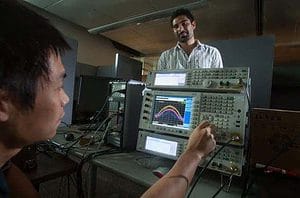If you ever wondered why you have to pay for broadband on your smartphone or tablet know that it too, like physical commodities, is a limited resource. Voice, text and Internet services, such as streaming video and music are transmitted on a limited spectrum, and at the current rate of deployment, broadband demand will soon overpower supply. This translates in slower service and, of course, higher price tags.

A group of researchers University of California, Riverside Bourns College of Engineering may have found a solution to this soon to be serious issue. The scientists have devised anew method that doubles the efficiency of wireless networks that could have a significant impact on the development of communications in the future.
Current wireless communications are made on radios called half-duplex, meaning signals are sent and received in two separate channels. Full duplex radios, which transmit signals at the same time in the same frequency band, can double the efficiency of the spectrum, and this is exactly what the Riverside scientists attempted.
These full duplex radios have been discussed for some time now in the field, however the main problem with their deployment is that 3G and 4G networks cant support the interference between the transmitting and receiving functions. Without a mitigating technology signals from cell towers, which can be billions of times more powerful than the ones towers are trying to pick up from a user’s smartphone, drown out the incoming signals.
The researchers overcome this challenge by developing what’s called “time-domain transmit beamforming.” This solution creates a time-domain cancellation signal and couples it to the radio frequency frontend to allow the radio to detect much weaker incoming signals while transmitting strong outgoing signals at the same frequency and same time.
“We believe the future applications of full duplex radios are huge, ranging from cell towers, backhaul networks and wireless regional area networks to billions handheld devices for data intensive application such as FaceTime,” said Liang, who added that the researchers have had discussions with several major wireless telecommunication equipment companies.
Since the upgrade would be all digital, there would be no need for extremely expensive hardware to be installed through out the wireless communication infrastructure grid. Cell towers are one of the most likely places to start implementing full-duplex radios, in large part because they are less constrained by existing standards.
Findings appear in the journal IEEE Signal Processing Letters.


